Does Baking Soda Kill Fleas or Flea Eggs?
Curious to find out if you can use basic baking soda as a cheap alternative to treat fleas? We cover that and more, in this guide!

Curious if you can use baking soda to kill fleas, their eggs, or just for flea prevention? Every pet owner deals with fleas at least once in their lifetime. Even if you diligently followed the preventative medicine instructions and kept your backyard nicely trimmed, fleas are hardy insects that like to hunker down once they’ve found a hospitable environment. So now you are stuck trying to find a somewhat natural remedy to get rid of the problem.
But there are many different ways you can actually treat fleas, some of which are natural or considered more of a home remedy. You can use dish soap to treat fleas, salt, diatomaceous earth, and coconut oil. There are also other treatments like Borax, that are man made, but may not be as safe. So what about baking soda?
In this guide, we answer all your questions around using baking soda to treat your home and pets effectively for fleas. Let’s jump in!
Flea Basics
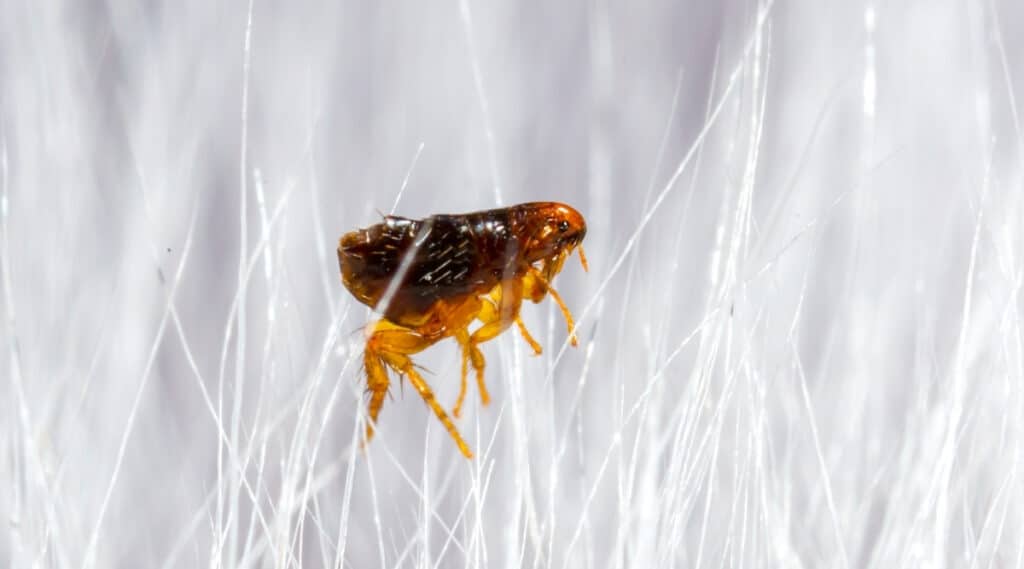
Fleas are small insects that act as an external parasite to mammals and birds but are most typically found on household pets. To understand how to get rid of a flea infestation, you should first learn about their habits and life cycle.
There are more than 2,000 known species and subspecies of fleas, but in America, we most commonly come into contact with the cat flea (Ctenocephalides felis) and the dog flea (Ctenocephalides canis). Each name is an indicator of their preferred host, but fleas are not picky and will settle for any animal they land on. Some fleas stick to humans, and none of them live very long without an active host.
They’re similar to mosquitos as they feed on the hosts’ blood to survive and leave behind small, round, and itchy bites, but they can’t fly. They can jump over one foot high into the air, making it easy for them to land on your pets outside and find their way into your home.
Fleas are relatively small, with adults measuring only 1/8th of an inch long. Their size and color make them extremely hard to identify, especially on animals with darker fur. Despite their small size, they can cause a lot of pain and discomfort to whoever they’re feeding on, especially because where there’s one flea—there’s more to follow.
Identifying a Flea Infestation
If your dog or cat is scratching more than usual, inspect near their ears and the base of their tail for signs of fleas. Run a fine-tooth comb through your pet’s fur, looking for moving, small brown shapes against their skin and coat.
Another indicator of fleas is flea dirt, which is fecal matter they leave behind. It looks like tiny black specks, similar to dirt picked up from outside. Take a wet paper towel and clean the area; if the dirt turns the towel red, it’s from a flea, since flea dirt is primarily composed of digested blood.
Can Baking Soda Kill Fleas and Flea Eggs?
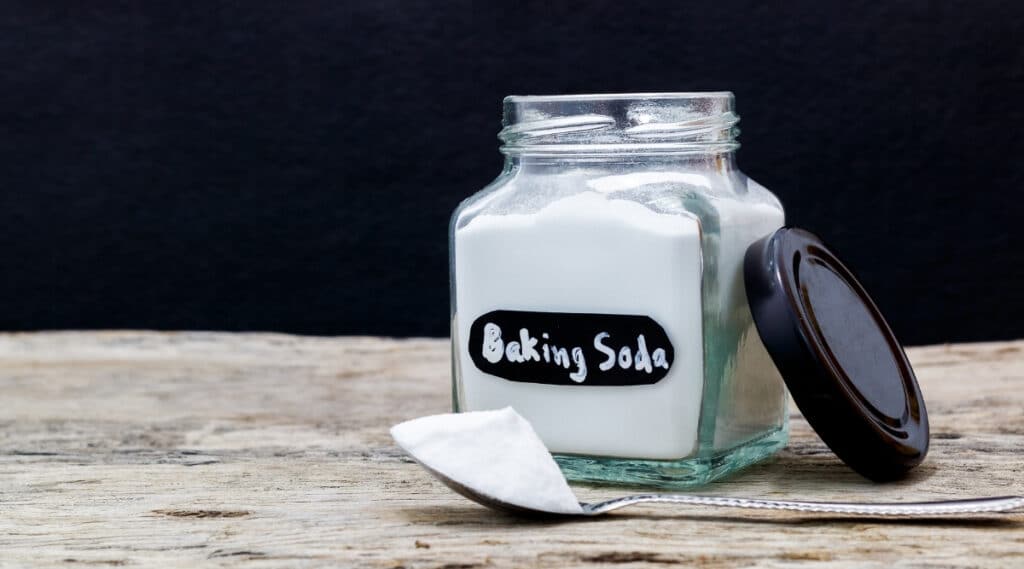
Baking soda is not only an ingredient you find in muffins, but instead has a broad range of alternative uses. Baking soda is a chemical compound known as sodium bicarbonate. It’s found as a crystalline but is ground down to a fine powder for household use. Baking soda is used for baking, cleaning, absorbing odors, and more.
Most importantly, YES, baking soda can kill fleas and their eggs.
Baking soda alone won’t do the trick. In order to create an effective method of flea control, the baking soda must be mixed with salt. Any type of salt is acceptable, including table salt, but your baking soda must still be active for the mixture to work.
Open baking soda that has been sitting in your cabinet for a month or more is most likely inactive. To test this, add half a teaspoon of baking soda to a few ounces of vinegar. If it fizzes for more than a few seconds, then the baking soda is still active. If you don’t receive these results, you need to head to the grocery store and buy a new container.
As opposed to popular chemical agents and flea bombs, baking soda and salt is a popular flea eradication method. It’s all-natural and chemical-free, making it a safer option for households with children or multiple pets. Also, many individuals already have the ingredients in their home, and if they don’t, the ingredients are sold at value prices.
Baking soda works by dehydrating fleas and eventually killing them. Fleas “clean” themselves by licking similar to other animals and insects, and while doing so, consume the mixture. This effect also applies to their eggs. Unlike the baking soda method, many home remedies are ineffective in eliminating eggs.
Using Baking Soda to Kill Fleas
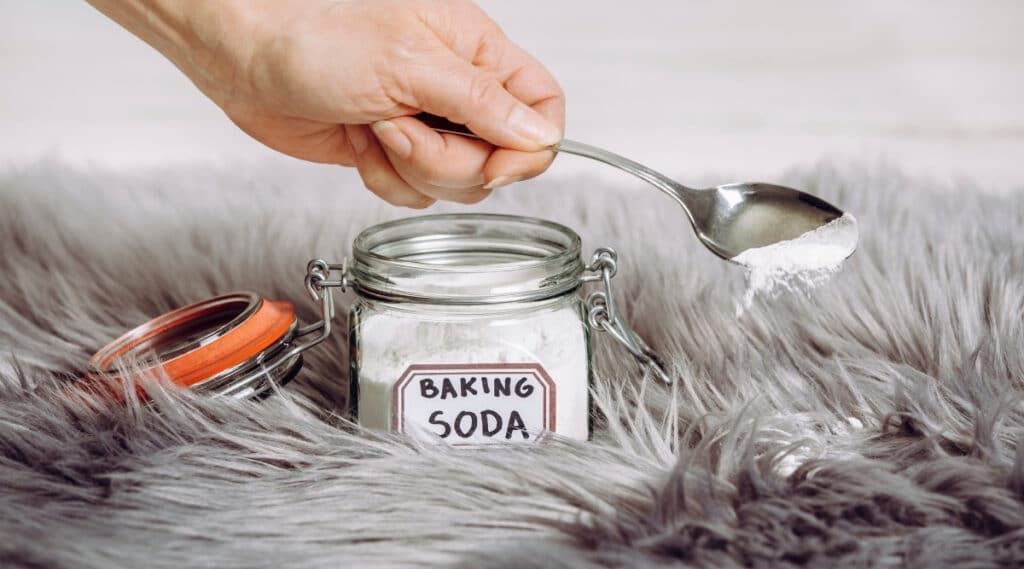
To effectively kill fleas and their eggs in your home by using baking soda, follow these steps:
- Mix an even amount of active baking soda and salt together.
- If you’re treating your entire home, you will need multiple gallons.
- You can mix the baking soda and salt in a large bucket or shaker bottle.
- You can also or mix it directly as you apply it to the carpet.
- Sprinkle a generous amount of the mixture evenly on your carpet.
- Make sure to cover all corners and hard-to-reach areas.
- Use a wide brush or broom to work the mixture into the carpet.
- Leave the mixture of baking soda and salt overnight.
- The next morning, vacuum your carpet thoroughly.
- Make sure to go over all treated areas.
- Take the vacuum hose and run it along any cracks or moldings.
- You want to make sure you clean where larvae might have burrowed.
- Empty your vacuum or dispose of any sealable bags in an outdoor trash can.
- Leaving the filter unemptied or in indoor trash cans gives them a way back in.
- Repeat the process every few days.
Since baking soda and salt aren’t toxic to humans, you don’t have to quarantine or avoid the area as you would with more potent chemicals and flea bombs, but if anyone has open cuts or wounds (including irritated flea bites), the mixture will sting.
Fleas are much harder to get rid of than they are to (catch). It would be best to continue treating your carpet and vacuuming even after you stop finding fleas on your pets or throughout the house. Fleas can stay inside their cocoons for up to six months before hatching as mature adults, and if a vacuum misses them, you can have a new infestation in no time.
Using Baking Soda on Your Pets
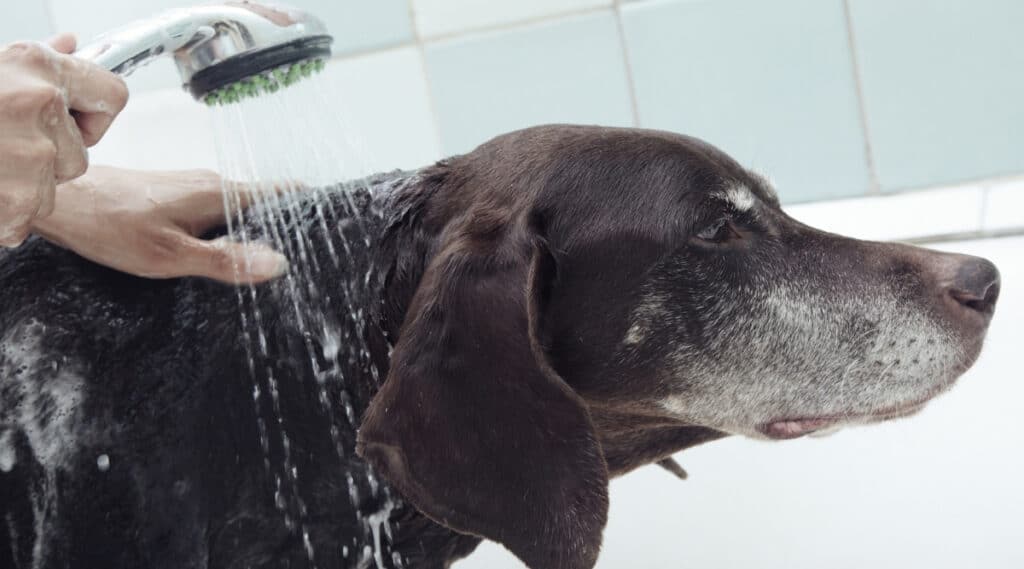
You can also use baking soda (no salt added) on your dog or cat. It deodorizes their coat in between baths and affects any fleas or other parasites that may be present. Baking soda is a key ingredient in many store-bought pet shampoos. To use baking soda to kill fleas present on your pets, follow these steps:
- Mix one tablespoon baking soda with 1 ½ cup water.
- This will make a basic homemade baking soda shampoo.
- Wet your pet’s coat with warm water.
- Important** Do NOT use it on your pet’s face.
- Work the mixture into their fur extensively.
- Let sit for a minute and then rinse.
While the baking soda is sitting on your pet’s coat, you can take a fine-tooth comb and brush through their fur to manually remove any fleas. Wipe the comb with a paper towel to remove any fleas and dispose of them immediately. This, in combination with the baking soda bath, will create an inhospitable environment for any parasites.
In between baths, you can also use baking soda on their coat as a form of dry shampoo.
- Avoiding the face, sprinkle an abundant amount on their body.
- Also make sure to get the base of their ears.
- Massage the baking soda in with your hands into their fur.
- Follow with a thorough brushing. No rinsing is required.
Remember that your pet is the primary method of travel for fleas, and is likely why they were able to enter your home in the first place. Because of this, you should be combining frequent baths and combing with effective flea control (collars, oral treatments, topical treatments) to make sure your pet is protected.
Using Baking Soda on Carpet & Furniture
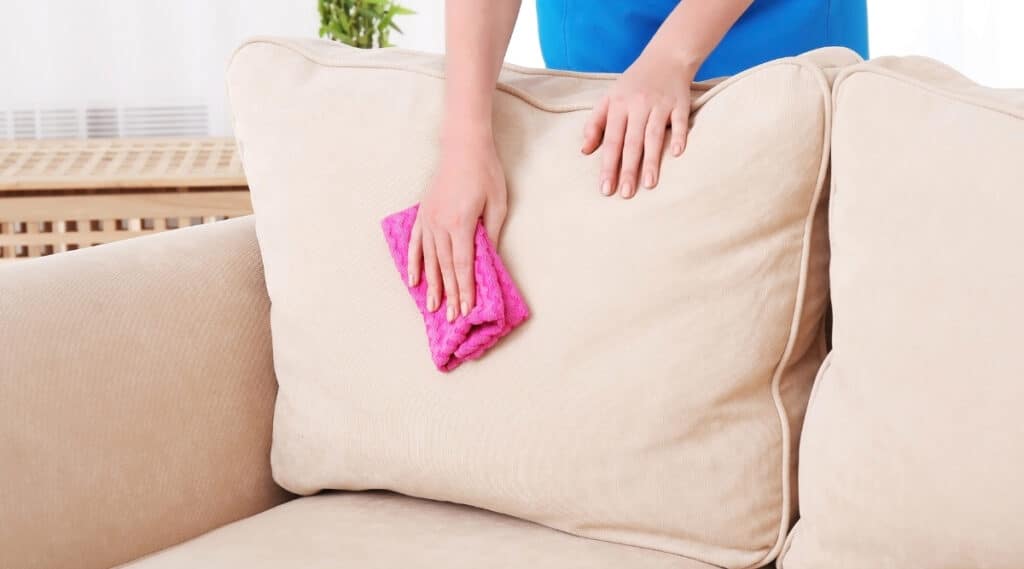
Carpets and pets are not the only places fleas like to hang out. After an adult flea lays eggs, as the host moves throughout your house, they’ll fall off and be deposited on bedding, furniture, and even your clothing, especially if your pet frequents the couch or your bedroom.
If you can’t throw away the affected article, you’ll have to keep up with the washing process diligently. Pay particular attention to areas of the home where your pet spends most of their time, like sleeping in bed with you, or the abundance of blankets, towels, and rugs found in or around their crate and bed.
Launder these items in very hot, soapy water. You can also add some baking soda to each load. When exposed to extreme heat, fleas die, so you need to transfer the laundry to the dryer as soon as the wash cycle is complete.
After they’re done drying, the best practice would be to bag these items and put them in an area where neither your pets nor you often frequent, like a utility or laundry closet. Once you have the flea infestation under control, you can put these items back out. If this isn’t an option, you’ll have to routinely wash the items as long as the infestation remains.
Minimizing the amount of bedding used (such as using only a comforter and skipping the top sheet or using one pillowcase instead of many) will also help. If you’ve found fleas on your bedding, it’s likely they’ve also spread to the mattress and pillows as well. Vacuum these items after using the baking soda and salt mixture. This also applies to other non-washable items such as couch cushions and decorative pillows.
Final Words on Baking Soda For Fleas
The steps and tips listed above deal with how to kill fleas and flea eggs with baking soda and treat different areas and items in your home.
You may also be curious about preventative measures you can take to avoid a flea infestation altogether. Whether you’re anticipating flea season and eager to protect your household from the blood-sucking pests, or you’ve just eliminated an infestation and would like to avoid going through the same thing in the future. There are two primary actions you can take to prevent a flea infestation.
The first step is maintaining your lawn. Fleas enjoy warm, humid areas outside of direct sunlight. They prefer to hide in tall grass, so regularly mowing your yard is a must. Afterward, use a rake and dispose of the debris instead of adding it to your compost pile. Fleas like to hide here. The smell of cedar chips also repulses them, so sprinkling these in areas where your pet likes to lay down will cause them to avoid the area as much as possible.
Baking soda is an effective method for killing fleas and flea eggs, but cannot be used as a preventative measure. Discovering that you have a flea infestation can be frustrating and disheartening, but don’t worry. Taking the right steps will eradicate the problem quickly, and you’ll be more prepared in the future.
Share this post
Save time and money on pest control
Subscribe to expert DIY pest control tips, pest control product reviews and information.




